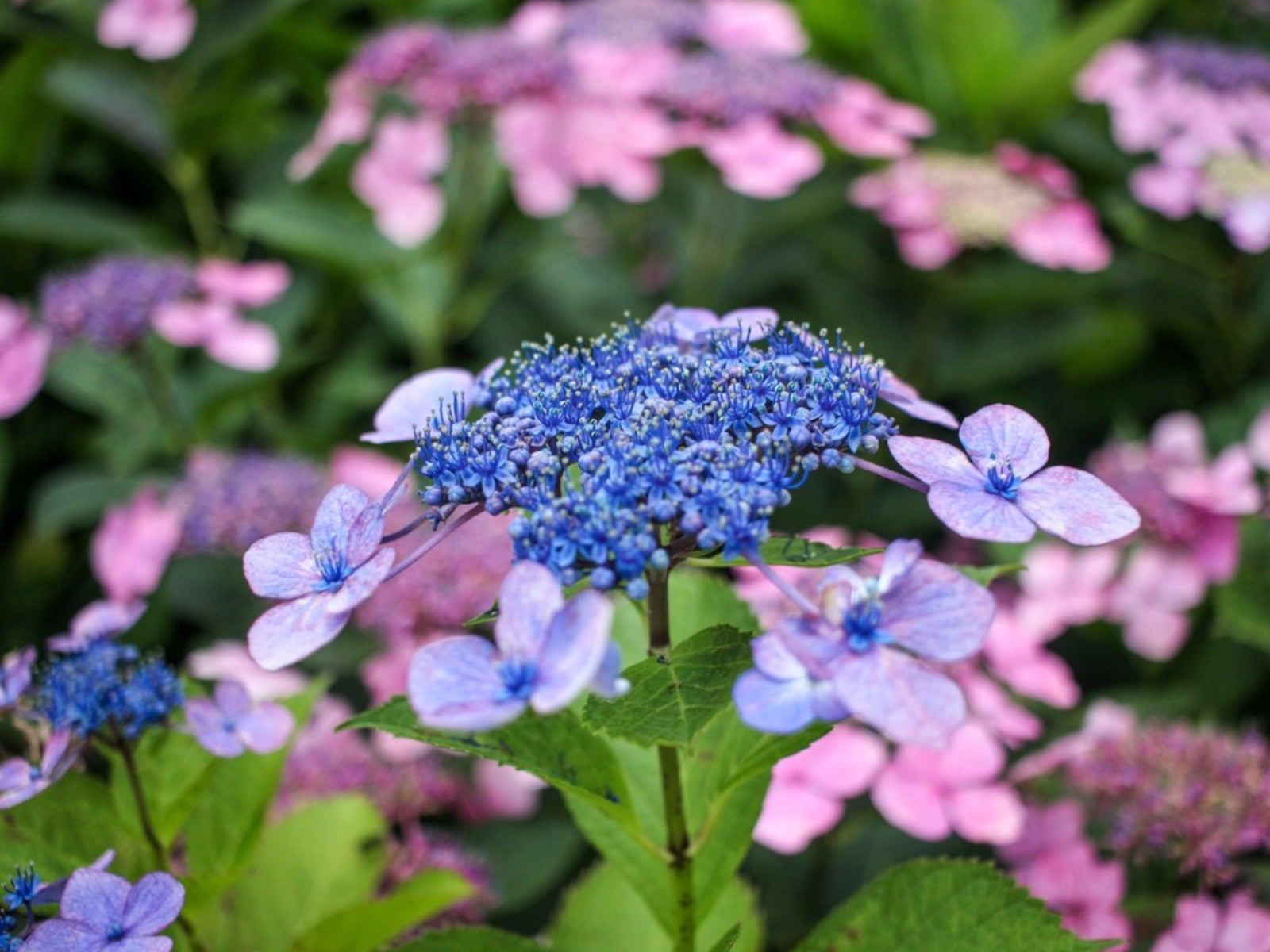Lacecap Hydrangea Shrubs – How To Grow A Bluebird Hydrangea Plant


Hydrangea shrubs are an ever popular option for use in borders and as hedges. Ranging considerably, various types of hydrangea bushes offer very different attributes to growers. For this reason, choosing which type of plant which may be best suited to one’s own landscape may feel difficult. One such plant, the lacecap hydrangea shrub, is ideal for smaller spaces and adds dynamic interest to the garden.
Bluebird Hydrangea Info
‘Bluebird’ hydrangea plant is a lacecap type of hydrangea. Lacecap hydrangea shrubs get their name from their unique flower bloom shape, which appears to open only slightly and forms a circle around a tightly closed center. Though quite different in appearance than more commonly known hydrangea forms, lacecap types are still quite beautiful.
The Bluebird hydrangea plant is prized for its moderate size and lovely light blue flower clusters, which may vary in color, depending upon soil pH levels. Those growing Bluebird lacecap hydrangeas in the landscape find that it serves as an excellent focal shrub, and can even be useful in providing seasonal privacy. These lacecap hydrangea shrubs are also among the few hydrangea types that offer vibrant fall foliage.
Growing Bluebird Lacecap Hydrangeas
Requirements for growing Bluebird lacecap hydrangeas are very similar to those of other hydrangea types. The plants prefer a location which receives ample sunlight, but is well adapted to part shade. Shady afternoons are especially ideal in areas with hot summer weather. As always, the planting site should be well-drained and account for the overall size of the hydrangea plant at maturity.
Gardeners should plan to make new hydrangea plantings in early spring or in the fall. To plant, simply dig a hole that is about twice as wide and as deep as the root ball of the transplant. Gently place the hydrangea into the hole, and begin to backfill it with soil. Water it well, and continue to monitor the plant until it becomes established.
Like other hydrangea bushes, when growing Bluebird lacecap hydrangeas you will need to establish a schedule of routine care and maintenance. This can include fertilization and irrigation, as well as pruning. Since the plants bloom on old wood, pruning should only be done when faded flowers are removed from the plant after bloom.
Bluebird hydrangea plants are likely to be found at local garden centers or online plant nurseries. Buying from a reputable source will help to ensure that plants are correctly labeled and disease free.
Gardening tips, videos, info and more delivered right to your inbox!
Sign up for the Gardening Know How newsletter today and receive a free copy of our e-book "How to Grow Delicious Tomatoes".

Tonya Barnett has been gardening for 13 years. Flowers are her passion. She has transformed her backyard into a cut flower garden, which she regularly chronicles on her YouTube channel http://www.youtube.com/@tonyawiththeflowers.
-
 Grow ‘Karl Rosenfield’ Peony Plants For The Ultimate Frilly Border Beauties And Cut Flowers
Grow ‘Karl Rosenfield’ Peony Plants For The Ultimate Frilly Border Beauties And Cut FlowersFor frilly double magenta peony petals infused with a heady fragrance, grow ‘Karl Rosenfield’ peony plants. Here’s how to cultivate the ultimate plushy blooms
By Tonya Barnett
-
 10 Common Composting Problems That Can Spoil Your Garden Gold – Plus Easy Fixes
10 Common Composting Problems That Can Spoil Your Garden Gold – Plus Easy FixesLearn how to troubleshoot common composting issues before they ruin your stash – from bad smells and bugs to materials not breaking down as they should.
By Susan Albert